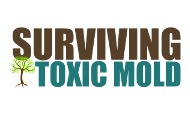|
A Mold Recovery Blog Monday, March 03 2025
Does Homeowners Insurance cover mold? Homeowners insurance can cover mold damage, but it depends on the cause of the mold. Generally, mold damage is covered if it results from a "covered peril," such as a burst pipe or an accidental water leak. However, mold caused by long-term issues, like ongoing leaks or poor maintenance, is typically not covered. If you live in a humid area or have a home prone to mold, you might consider adding a mold endorsement to your policy for extra protection. It's always a good idea to review your specific policy or speak with your insurance agent to understand your coverage better. If you do find out that your policy does cover mold..How do you file a claim with your insurance against mold? Filing a claim for mold damage under your homeowners insurance policy involves several steps. Here's a general guide to help you through the process:
Remember, the specific steps and requirements may vary depending on your insurance policy and company. It's always a good idea to review your policy and speak with your insurance agent for personalized guidance. |
|
Do you think you might have mold in your home, place of business or school? Are you or someone you love suffering from an unknown illness that doctors can't diagnose? Is mold making you sick? Go to our Step by Step and start Surviving Toxic Mold. |





